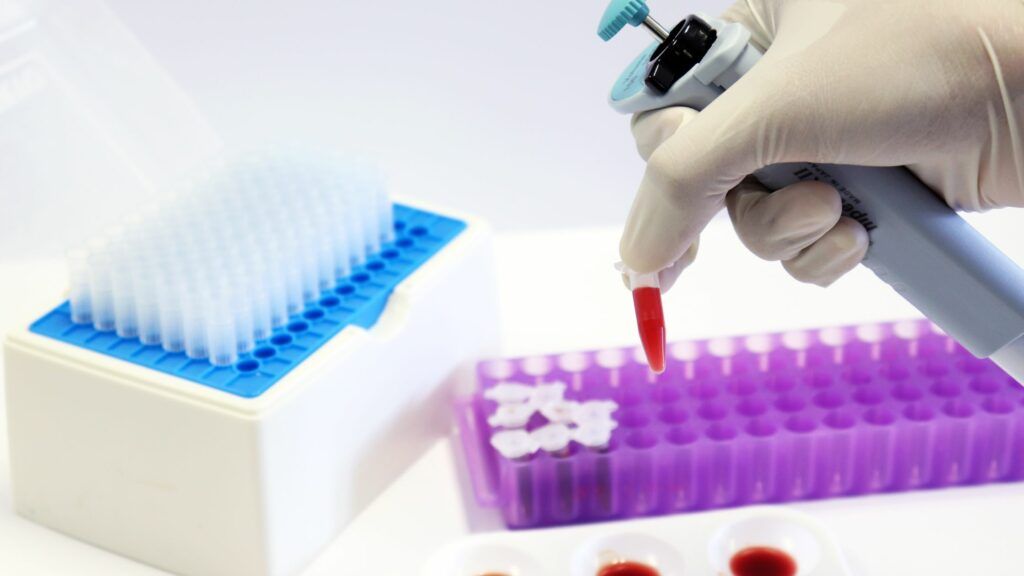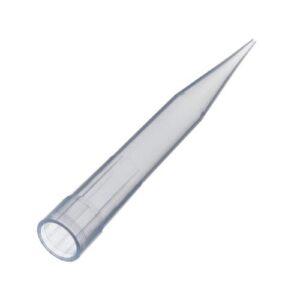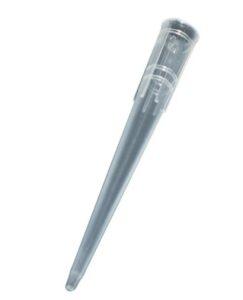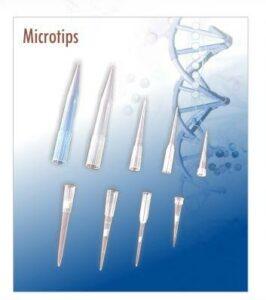Precision and accuracy are essential in medical science and research. One of the essential tools in this field is the micropipette, which allows for precise liquid handling and dispensing. Micropipette tips, fillers, and boxes play a crucial role in ensuring the integrity of samples and preventing contamination during experiments and procedures.
In this blog, we will explore the various applications of medical micropipette tips. We will discuss the importance of preventing contamination with micropipette tip fillers. You will also discover the perfect micropipette tip boxes for your laboratory needs and learn about cryogenic storage boxes for optimal sample preservation. Additionally, we will provide step-by-step instructions on how to fill micropipette tips correctly and share essential best practices for their usage.
Exploring the Applications of Medical Micropipette Tips
Various settings, such as laboratories, research facilities, and clinical environments, depend on medical micropipette tips. These small but crucial tools enable precise liquid handling, accurate dispensing, and sample transfer in medical experiments and procedures.
In laboratory research, medical micropipette tips are commonly used for DNA amplification, protein purification, PCR, and other molecular biology techniques. They facilitate the precise measurement and transfer of small volumes of reagents, ensuring reliable and reproducible results.
In clinical diagnostics, micropipette tips are employed in medical laboratories for tasks such as sample preparation, liquid biopsy, and drug screening. The accuracy and precision offered by these tips are critical for obtaining accurate diagnostic results and guiding patient treatment decisions.
Moreover, medical micropipette tips find applications in pharmaceutical research, where they are utilized in drug discovery, formulation development, and high-throughput screening. The ability to handle tiny volumes of drug compounds with precision is essential for optimizing drug efficacy and minimizing wastage.
Prevent Contamination with Micropipette Tip Fillers
When it comes to experiments and procedures using micropipettes, contamination is a major concern. To safeguard results’ accuracy and reliability, cross-contamination must be prevented during pipetting. This is where micropipette tip fillers come into play.
Micropipette tip fillers are specialized tools designed to maintain sterility and prevent cross-contamination when filling micropipette tips. These fillers offer a convenient and efficient way to load tips onto the pipettes while minimizing the risk of introducing external contaminants. By using micropipette tip fillers, researchers and laboratory professionals can ensure the integrity of their samples and maintain the reliability of their experiments. These filters provide a controlled and sterile environment for tip loading, reducing the chances of sample contamination and experimental errors.
Automated filler systems are available that further enhance the efficiency and accuracy of the process. These systems allow for precise and consistent tip filling, saving valuable time and minimizing the risk of human error. When selecting a micropipette tip filler, it is important to consider factors such as compatibility with the tip size and type, ease of use, and the level of sterility provided. It is recommended to choose fillers that are specifically designed for medical applications to meet the stringent requirements of the field.
By incorporating micropipette tip fillers into laboratory workflows, researchers can significantly reduce the risk of contamination, ensuring reliable and reproducible results in their medical experiments and procedures.
Find the Perfect Micropipette Tip Boxes for Your Laboratory
In a laboratory setting, organization and proper storage of micropipette tips are essential for maintaining efficiency and preventing contamination. Choosing the right micropipette tip boxes plays a crucial role in achieving these goals.
When searching for the perfect micropipette tip boxes for your laboratory, several factors should be considered. First and foremost, the box should provide a secure fit for the tips, preventing any movement or potential damage. It should have a well-designed lid that ensures a tight seal to protect the tips from dust, moisture, and other external factors. Another thing is the box size. It should be spacious enough to accommodate the required number of tips while allowing easy access and retrieval. Additionally, opt for a stackable box, as this helps optimize storage space, especially in laboratories where space is limited.
The material of the box is also crucial. It should be durable and resistant to chemicals, ensuring that the integrity of the tips is not compromised. Transparent boxes are highly recommended, as they allow for easy visualization of the tip sizes and quantities. Lastly, consider any additional features that may enhance the usability of the box. Some boxes come with color-coded racks or labels, making it easier to identify different tip sizes or types. Others may have dividers to further organize the tips within the box.
By selecting the perfect micropipette tip boxes for your laboratory, you can ensure that your tips are stored safely, readily accessible, and protected from contamination. This investment in proper storage solutions will contribute to the overall efficiency and accuracy of your experiments and procedures.
Essential Best Practices for Micropipette Tip Usage
Using micropipette tips correctly is crucial to ensure accurate and reliable results in medical laboratories and research settings. Adhering to essential best practices can significantly enhance the efficiency and precision of your experiments. Consider the following guidelines.
- Proper Handling: Always handle micropipette tips with clean, dry hands to prevent contamination. Avoid touching the inside of the tips to maintain sterility.
- Selecting the Right Tip Size: Choose a tip size that matches the volume you are pipetting. Using an inappropriate tip size can lead to inaccurate measurements and sample carryover.
- Avoiding Sample Carryover: To prevent sample carryover, change tips between each sample. Dispense the liquid slowly and release the plunger smoothly to minimize any residual liquid.
- Minimising Liquid Retention: Pre-wet the tip before aspirating the liquid to improve accuracy and minimize liquid retention. Ensure that the liquid level is below the tip’s capacity to avoid overflow.
- Maintaining Sterility: Use sterile tips for sensitive applications, such as cell culture or PCR. Sterile tips help prevent contamination and ensure the integrity of your samples.
- Regular Maintenance: Clean and inspect your micropipettes and tips regularly. Remove any debris or residue that could affect their performance. Follow the manufacturer’s guidelines for cleaning and maintenance.
- Proper Storage: Store micropipette tips in a clean and dry environment, away from contaminants and extreme temperatures. Use appropriate tip racks or boxes to keep them organized and protected.
By following these essential best practices, you can optimize your micropipette tip usage, minimize errors, and maintain the accuracy and reliability of your experiments.
Troubleshooting Guide: Common Issues with Micropipette Tips
Micropipette tips are vital tools in medical laboratories, but they can sometimes present challenges that affect their performance. Understanding common issues and knowing how to troubleshoot them can save time, and resources, and ensure precise results. Let us see some common problems and their solutions:
- Tip Leaks: If you notice liquid leaking from the tip during pipetting, check that the tip is properly attached to the pipette. Replace the tip if the seal is compromised.
- Inconsistent Results: Inconsistency in pipetting volumes can occur due to air bubbles trapped in the tip. Ensure that there are no bubbles by priming the pipette before aspirating the sample.
- Difficulty in Tip Attachment: Make sure you are using the right type and size of the tip when attaching the pipette tip.
- Uneven Dispensing: Uneven dispensing can result from a damaged or worn-out tip. Replace the tip with a new one to ensure smooth and precise dispensing.
- Tip Compatibility: Make sure that the tips you are using are compatible with your specific pipette model. Using incompatible tips can lead to inaccurate measurements.
- Calibration Issues: If you observe inconsistent volumes despite using the correct tip and technique, consider calibrating your pipette. Follow the manufacturer’s instructions or consult a service professional.
- Contamination: Contaminated tips can compromise the integrity of your samples. Ensure proper storage, and handling, and use sterile tips when necessary.
By troubleshooting these common issues, you can overcome challenges associated with micropipette tips and ensure safe, reliable, and accurate experiments in your medical laboratory.
Contamination Prevention: Ensuring Clean Micropipette Tips
Maintaining clean and contamination-free micropipette tips is of utmost importance in any laboratory or medical setting. Contaminated tips can compromise the accuracy and reliability of experiments, leading to skewed results and potentially invalidating the entire study. Therefore, implementing effective contamination prevention measures is essential.
One of the key strategies for ensuring clean micropipette tips is regular cleaning and decontamination. It is recommended to clean the tips before and after each use to remove any residual substances or contaminants. This can be done by aspirating and dispensing deionized water or a suitable cleaning solution multiple times. Proper storage of micropipette tips also plays a critical role in contamination prevention. Tips should be stored in clean and dedicated tip boxes or racks that offer protection from dust, moisture, and airborne contaminants. Avoid leaving tips exposed on the lab bench or in open containers, as this increases the risk of contamination.
In addition to cleaning and storage, it is crucial to follow good laboratory practices to minimize the introduction of contaminants. Proper hand hygiene is essential, as well as wearing appropriate protective equipment (PPE), such as gloves and lab coats. Additionally, it is important to maintain a clean and organized workspace, regularly disinfecting surfaces and equipment. Regular maintenance and calibration of micropipettes are also essential for contamination prevention. Pipettes should be serviced according to the manufacturer’s recommendations to ensure accurate and consistent pipetting volumes. A malfunctioning or poorly calibrated pipette can lead to sample carryover and contamination.
By implementing these contamination prevention strategies, laboratories can ensure clean and reliable micropipette tips, ultimately improving the quality and validity of their experiments and research.
Micropipette tips, fillers & Boxes from leading Indian Manufacturers
Micropipette Tips Gilson Type
Recombinant Laboratories Pvt. Ltd. is India’s top manufacturer and global supplier of laboratory equipment. The Micropipette Tips Gilson Type is made from 100 percent medical-grade virgin polypropylene material. These transparent polypropylene tips enable detailed examination of samples and provide access to narrow tubes and deep well plates. The longer, thinner, and ultrafine points of the tips prevent sample hang-up and ensure precise liquid transfer. The graduated exterior walls have flush calibration lines that prevent specimen tube hang-up. Available in blue, yellow, and white colors, these Gilson-type micropipette tips are ideal for various laboratory applications.
Filter Tips
BR Biochem Life Sciences Pvt. Ltd. is one of the leading manufacturers and global suppliers of cost-effective Micropipette Tips in India. The Filter Tips, made of high-quality colorless granules of virgin polypropylene, guarantee the most precise and consistent results. The hydrophobic filter improves tip performance and prevents particles from entering the pipettor, ensuring accurate and contamination-free liquid handling. These filter tips are particularly well-suited for use with PCR, providing reliable and efficient sample preparation.
Micropipette Tips
Levram Lifesciences Pvt. Ltd. is a leading manufacturer and global supplier of hospital consumables in India. Their Micropipette Tips are simple to insert and remove, making them convenient for various laboratory applications. Other disciplines using these tips include molecular biology, microbiology, immunology, cell culture, analytical chemistry, and PCR assays. Made of high-quality materials, these micropipette tips ensure accurate and reliable results in experimental procedures.
Microtips
Designed for liquid absorption and dispensing in medical and research settings, Microtips by Biosystem Company are made from virgin plastic and offer exceptional quality. Their chemically resistant polypropylene composition ensures contamination-free liquid transfer, safeguarding sample integrity. Fully autoclavable, these micropipette attachments promote a sterile working environment, enhancing experimental accuracy. Compatible with various pipettes, Microtips provides a universal solution for laboratories, allowing precise and controlled liquid handling. Trusted by medical professionals, Microtips excel in PCR testing, enabling accurate sample volume transfer while minimizing cross-contamination risks. Elevate your experiments with Microtips and experience consistent performance and efficiency in your medical and research endeavors.
Fornax Power Pipette Controller
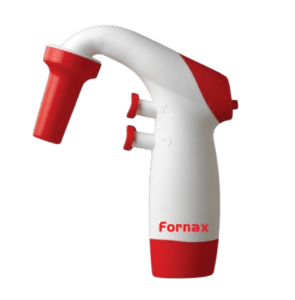 Shivani Scientific Industries (P) Ltd. is one of the main producers and international providers of pipette fillers. The Fornax Power Pipette Controller offers excellent performance and convenience in pipetting tasks. It can fill a 25 ml pipette within four seconds, saving valuable time in the laboratory. The controller is equipped with safety valves and hydrophobic filters, providing two levels of protection against fluid penetration. By adjusting finger pressure on the control knobs, the pump speed can be fine-tuned for improved speed control. The controller is powered by cadmium-free eco-friendly NIMH batteries, and its user-friendly design allows for easy battery replacement. Additionally, it comes with an intelligent charger that safeguards against battery overheating or overcharging. The Fornax Power Pipette Controller also includes a low battery indicator, ensuring uninterrupted workflow in the laboratory.
Shivani Scientific Industries (P) Ltd. is one of the main producers and international providers of pipette fillers. The Fornax Power Pipette Controller offers excellent performance and convenience in pipetting tasks. It can fill a 25 ml pipette within four seconds, saving valuable time in the laboratory. The controller is equipped with safety valves and hydrophobic filters, providing two levels of protection against fluid penetration. By adjusting finger pressure on the control knobs, the pump speed can be fine-tuned for improved speed control. The controller is powered by cadmium-free eco-friendly NIMH batteries, and its user-friendly design allows for easy battery replacement. Additionally, it comes with an intelligent charger that safeguards against battery overheating or overcharging. The Fornax Power Pipette Controller also includes a low battery indicator, ensuring uninterrupted workflow in the laboratory.
Conclusion
In conclusion, the proper selection, usage, and maintenance of micropipette tips, fillers, and boxes are of utmost importance in the medical industry. By exploring the various applications of micropipette tips, and implementing contamination prevention measures, healthcare professionals can ensure accurate and reliable experimental results.
Additionally, selecting the right micropipette tip boxes and cryogenic storage boxes plays a crucial role in sample organization and preservation. With the knowledge gained from this blog, healthcare professionals can elevate their laboratory practices, maintain sample integrity, and achieve reliable and accurate results in the ever-evolving field of medical research.
